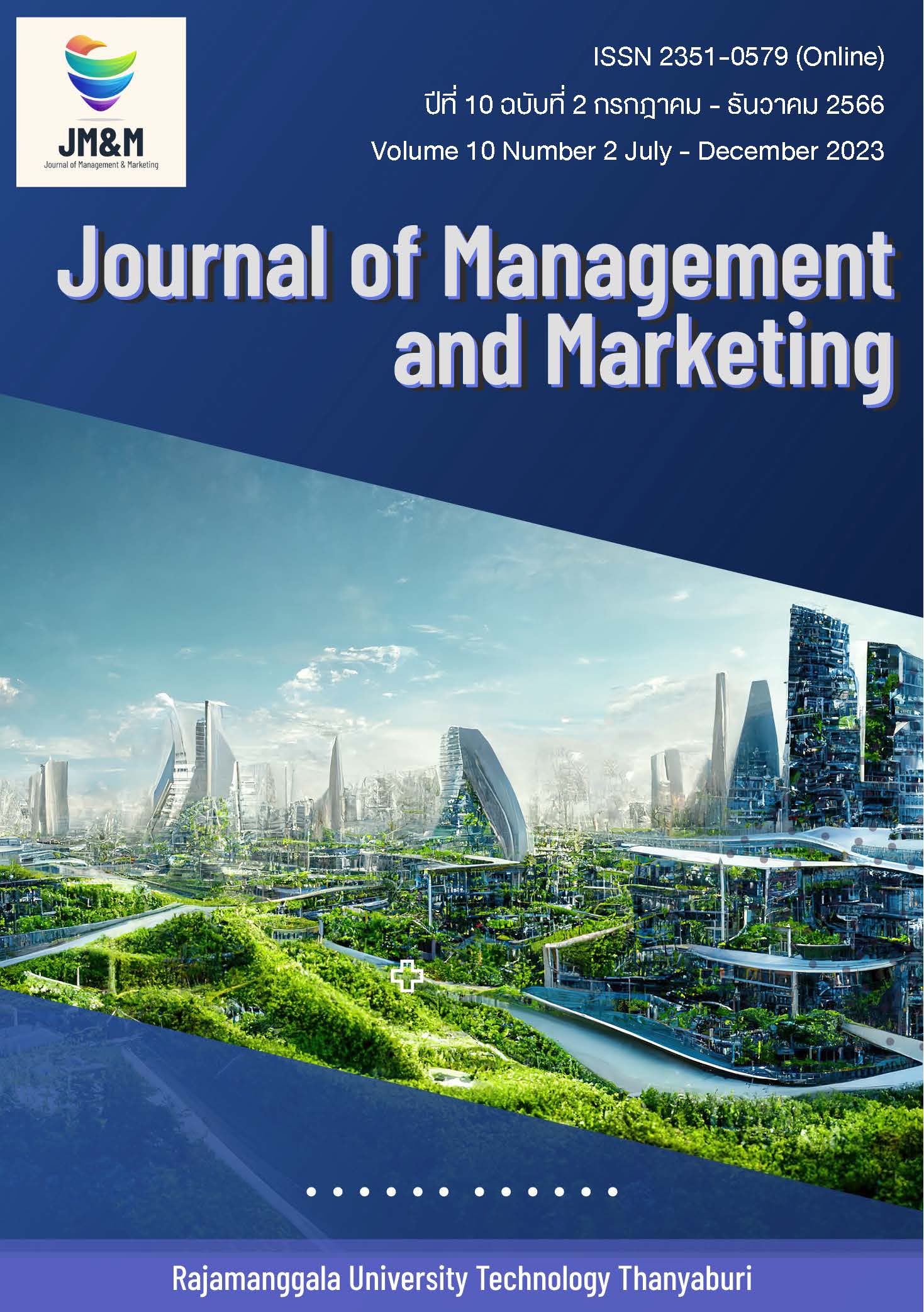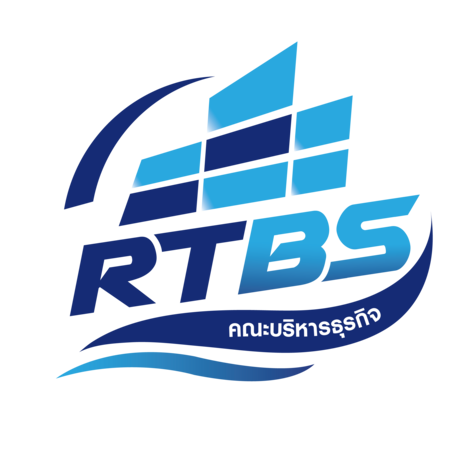THE INFLUENCE OF ENTERPRISE MOBILE LIVE-STREAMING MARKETING OPERATIONS ON CUSTOMER LOYALTY
DOI:
https://doi.org/10.60101/mmr.2023.264096คำสำคัญ:
Information System Success Model, Perceived Usefulness, Trust, Customer Loyaltyบทคัดย่อ
This study aims to analyze the influence of enterprise operation on mobile live-streaming marketing platforms and its quality on customer behavior, which has been analyzed based on the previous studies with the developed questionnaire, in which 414 collected sets in China as a sample. Enterprises and online platforms in the context of mobile live streaming have three constructs: system quality, information quality, and service quality. These factors would influence customer behaviors regarding perceived usefulness and trust in both enterprise and platform, affecting customer loyalty.
Moreover, several findings have proved the direct relationship between those factors in a specific context and area. In contrast, the new results reveal more complex relationships, such as indirect relationships between those factors. In addition, this paper will contribute more practical suggestions to enterprises that want to magnify their advantages through mobile live-streaming marketing platforms.
เอกสารอ้างอิง
Anderson, E., & Weitz, B. (1992). The use of pledges to build and sustain commitment in distribution channels. Journal of Marketing Research, 29(1), 18-34.
Belk, R. W. (1975). Situational variables and consumer behavior. Journal of Consumer Research, 2(3), 157. https://doi.org/10.1086/208627
Blomqvist, K. (1997). The many faces of trust. Scandinavian Journal of Management 13(3), 271-286.
Boulding, W., Kalra, A., Staelin, R., & Zeithaml, V. A. (1993). A dynamic process model of service quality: from expectations to behavioral intentions. Journal of Marketing Research, 30(1), 2-27.
Cenfetelli, R., Benbasat, I., & Al-Natour, S. (2008). Addressing the What and How of Online Services: Positioning Supporting-Services Functionality and Service Quality for Business-to-Consumer Success. Information Systems Research, 19(2), 161-181.
Corral, L., Janes, A., & Remencius, T. (2012). Potential Advantages and Disadvantages of Multiplatform Development Frameworks-A Vision on Mobile Environments. Procedia Computer Science, 10, 1202-1207.
Davis, F. (1989). Perceived usefulness, perceived ease of use, and user acceptance of Information Technology. MIS Quarterly, 13(3), 319-340.
Davis, F. D., Bogozzi, R., P., & Warshaw, P., R. (1989). User acceptance of computer technology: A comparison of two theoretical models. Management Science, 35, 982-1003.
DeLone, W. H., & McLean, E. (2004). Measuring e-Commerce Success: Applying the DeLone & McLean Information Systems Success Model. International Journal Of Electronic Commerce, 9(1), 31-47.
DeLone, W. H., & McLean, E. R. (1992). Information systems success: The quest for the dependent variable. Information Systems Research, 3(1), 60-95.
Delone, W. H., & McLean, E. R. (2003). The DeLone and McLean model of information systems success: A ten-year update. Journal of Management Information Systems, 19(4), 9-30.
FANG, X., CHAN, S., BRZEZINSKI, J., & XU, S. (2005). Moderating Effects of Task Type on Wireless Technology Acceptance. Journal Of Management Information Systems, 22(3), 123-157.
Gefen, D. (2002). Customer Loyalty in E-Commerce. Journal Of The Association For Information Systems, 3(1), 27-53.
Hong, S., & Tam, K. (2006). Understanding the Adoption of Multipurpose Information Appliances: The Case of Mobile Data Services. Information Systems Research, 17(2), 162-179.
Kahn, B. K., Strong, D. M., & Wang, R. Y. (2002). Information Quality Benchmarks: Product and service performance. Communications of the ACM, 45(4). 184-192.
Kline, R. B. (2016). Principles and Practice of Structural Equation Modeling (4th ed.). New York: The Guilford Press.
Lee, C.H., Lee, H. N., & Choi, J. I. (2023) The Influence of Characteristics of Mobile Live Commerce on Purchase Intention. Sustainability, 15(7), 5757.
Liu Liang. (2021). The Influence of Enterprise Online Information Behavior on Consumer Satisfaction. ABAC Journal Vision. Action. Outcome, 8(1), 127-140.
Liu, F., Wang, Y., Dong, X., & Zhao, H. (2022). Marketing by live streaming: How to interact with consumers to increase their purchase intentions. Frontiers in Psychology, 13, 933633.
Mayer, R. C., & Davis, J. H., & Schoorman, F. D. (1995). An integration model of organizational trust. Academy of Management Review, 20(3), 709-734.
Mehrabian, A., & Russell, J. A. (1974). An Approach to Environmental Psychology. Cambridge: The MIT Press.
Mofokeng, T. E. (2023). Antecedents of trust and Customer Loyalty in online shopping: The moderating effects of online shopping experience and E-shopping spending. Heliyon, 9(5), 16182. Retrieved from https://pubmed.ncbi. nlm.nih.gov/37215762/
Naidoo, R., & Leonard, A. (2007). Perceived usefulness, service quality and loyalty incentives: Effects on Electronic Service Continuance. South African Journal of Business Management, 38(3), 39-48.
Oliver, R. L. (1997). Satisfaction: A Behavioral Perspective on the Consumer. New York, NY: Irwin-McGraw-Hill.
Parasuraman, A., Zeithaml, V.A. & Berry, L.L. (1988). SERVQUAL: a multiple item scale for measuring consumer perceptions of service quality. Journal of Retailing, 64(5), 21-40.
Petter, S., DeLone, W., & McLean, E. (2008). Measuring information system success: Models, dimensions, measures, and interrelationship. European Journal of Information Systems, 17, 236-263.
Sang, L. B. (2020). Livestream marketing and digital transformation of enterprise marketing mode. Atlantis Press journal, 159, 217-222.
Straub, D., & Gefen, D. (2004). Validation Guidelines for IS Positivist Research. Communications of The Association for Information Systems, 13, Retrieved from https://doi.org/10.17705/1cais.01324
Venkatesh, V., & Davis, F. D. (2000). A theoretical extension of the technology acceptance model: four longitudinal field studies. Management Science, 46(2), 186-204.
Venkatesh, V., Morris, M. G., Davis, G. B., & Davis, F. D. (2003). User Acceptance of Information Technology: Toward a Unified View. MIS Quarterly, 27(3), 425-478.
Wixom, B., & Todd, P. (2005). A Theoretical Integration of User Satisfaction and Technology Acceptance. Information Systems Research, 16(1), 85-102.
Wongkitrungrueng, A., & Assarut N. (2020). The role of live streaming in Building Consumer Trust and engagement with Social Commerce Sellers. Journal of Business Research, 117, 543-556.
Xiao, Q., Wan, S., Zhang, X., Siponen, M., Qu, L., & Li, X. (2022). How consumers’ perceptions differ towards the design features of Mobile Live Streaming Shopping Platform: A mixed-method investigation of respondents from Taobao Live. Journal of Retailing and Consumer Services, 69, 103098. Retrieved from https://doi.org/10.1016/j.jretconser.2022.103098.
Ye, X., Batool, H., & Huang, S.-Z. (2023). The effect of e-commerce livestreaming services on customer loyalty: A test of the chain mediation model. Journal of Innovation and Entrepreneurship, 12(1), Retrieved from https://doi.org/10.1186/s13731-023-00310-2
ดาวน์โหลด
เผยแพร่แล้ว
รูปแบบการอ้างอิง
ฉบับ
ประเภทบทความ
สัญญาอนุญาต
ลิขสิทธิ์ (c) 2023 วารสารวิชาการการตลาดและการจัดการ มหาวิทยาลัยเทคโนโลยีราชมงคลธัญบุรี

อนุญาตภายใต้เงื่อนไข Creative Commons Attribution-NonCommercial-NoDerivatives 4.0 International License.
บทความที่ได้รับการตีพิมพ์เป็นลิขสิทธิ์ของ ผู้นิพนธ์
ข้อความที่ปรากฏในบทความแต่ละเรื่องในวารสารวิชาการเล่มนี้เป็นความคิดเห็นส่วนตัวของผู้เขียนแต่ละท่านไม่เกี่ยวข้องกับมหาวิทยาลัยเทคโนโลยีราชมงคลธัญบุรี และคณาจารย์ท่านอื่น ในมหาวิทยาลัยฯ แต่อย่างใด ความรับผิดชอบองค์ประกอบทั้งหมดของบทความแต่ละเรื่องเป็นของผู้เขียนแต่ละท่าน หากมีความผิดพลาดใดๆ ผู้เขียนแต่ละท่านจะรับผิดชอบบทความของตนเองแต่ผู้เดียว









